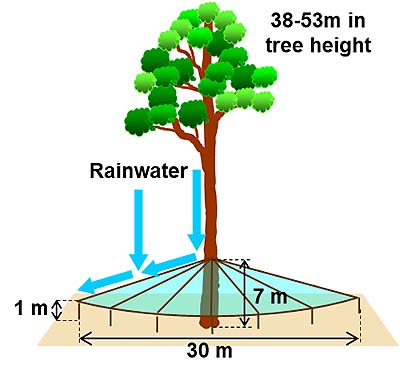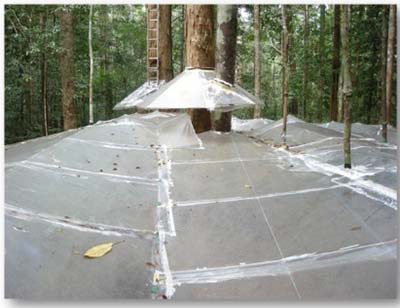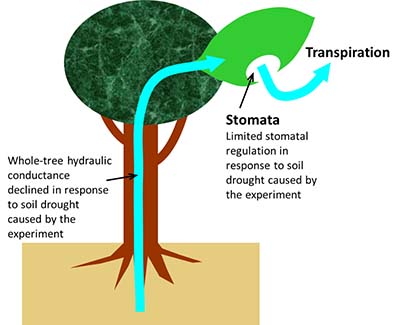Home > Research > Research Results > Research Results 2020 > Field experiments to investigate the response of water use of emergent trees in a tropical rainforest to drought conditions
Update:May 28, 2020
Main content starts here.
Field experiments to investigate the response of water use of emergent trees in a tropical rainforest to drought conditions
| Article title |
Limited stomatal regulation of the largest-size class of Dryobalanops aromatica in a Bornean tropical rainforest in response to artificial soil moisture reduction |
||||
|---|---|---|---|---|---|
| Author (affiliation) |
Natsuko Yoshifuji (a)(e), Tomo’omi Kumagai (b)(c), Tomoaki Ichie (d), Tomonori Kume (e), Makiko Tateishi (f), Yuta Inoue (g)(h), Aogu Yoneyama (d), Tohru Nakashizuka (i) (a) Department of Disaster Prevention, Meteorology and Hydrology, FFPRI, Tsukuba, Ibaraki, Japan. (b) Nagoya University, Nagoya, Aichi, Japan. (c) The University of Tokyo, Bunkyo-ku, Tokyo, Japan. (d) Kochi University, Nankoku, Kochi, Japan. (e) Kyushu University, kasuya-gun, Fukuoka, Japan. (f) Kyoto University Research Administration Office, Kyoto, Japan. (g) Department of Plant Ecology, FFPRI, Tsukuba, Ibaraki, Japan. (h) Ehime University, Matsuyama, Ehime, Japan. (i) Research Institute for Humanity and Nature, Kyoto, Japan. |
||||
| Publication Journal |
Journal of Plant Research, 19 December 2019 DOI:10.1007/s10265-019-01161-3( External link ) |
||||
| Content introduction |
The effect of climate change on forests is a topic of great interest in the world today. The tropical rainforests of Southeast Asia are usually in a very humid environment throughout the year, but it has been pointed out that climate change may cause a severe drought in the future. Field-based rainfall exclusion experiments were conducted in a tropical rainforest in Borneo, Malaysia, to investigate the water use response of emergent trees to soil drought. 30m-diameter umbrella-shaped vinyl sheets were placed above the ground around the bases of emergent trees of Dryobalanops aromatica (38 to 53 m in height) to cause an artificial soil drought by preventing rainwater from permeating into the ground. The leaves of trees contain tiny pores called stomata. Trees take in carbon dioxide through stomata for photosynthetic carbon assimilation while simultaneously releasing water vapor through stomata in a process that is called transpiration. Trees regulate stomatal apertures in response to environmental conditions to prevent excessive water loss by transpiration, and the extent and sensitivity of stomatal regulation depend on the tree species. In the present study, soil drought induced only limited stomatal regulation and caused a decline in whole-tree hydraulic conductance (i.e., ease of water flow from soil to leaves through roots and stems). These findings suggest a poor resistance of the studied emergent trees to unusually severe drought. They will help to improve our knowledge about the possible responses of and changes in tropical rainforests in Southeast Asia under severe drought conditions that are expected to occur in future due to climate change.
|
Copyright © Forest Research and Management Organization. All rights reserved.



